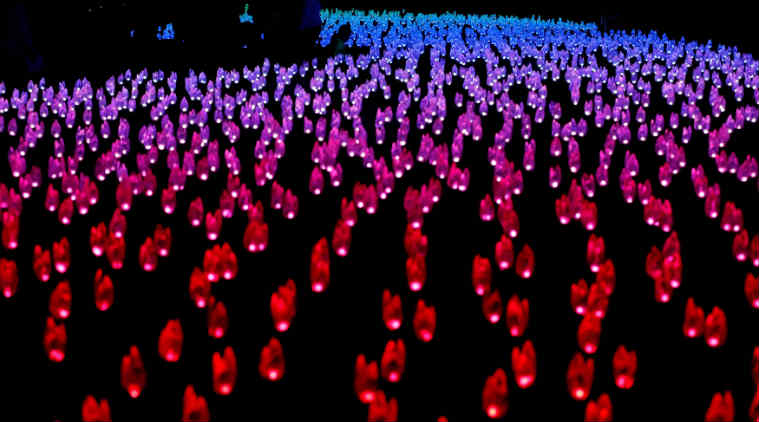When we think we are making progress....
Maybe, we are not. LED's are very popular now. Their efficiency is great, and their price is dropping. The value of their performance is great.
Yet, the trade off is more light pollution. And those of you who have been far away from lights and looking up to a starry, night sky, know how powerful and beautiful that horizon becomes.
Should we continue to replace with incandescents with LED's? Yes, no doubt. The reduction in energy used, and the concurrent value to the economy, out strips the blaze of night lights across the sky, which, as you also know, can be beautiful in its own right.
Pollution from artificial, LED lights rising rapidly worldwide: Study
Artificial lighting
at night is contributing to an alarming increase in light pollution,
both in amount and in brightness, affecting places all over the world,
including India, a study has found.

Artificial lighting at night is contributing to an alarming increase in light pollution, both in amount and in brightness, affecting places all over the world, including India, a study has found.
Scientists fear that this “rebound effect” might partially or totally cancel out the savings of individual lighting retrofit projects, and make skies over cities considerably brighter. An international study led by Christopher Kyba from the GFZ German Research Centre for Geoscience lends proof to this hypothesis. According to the study published in the journal Science Advances, the artificially lit surface of Earth at night increased in radiance and extent over the past four years by two per cent annually.
The scientists used data from the first-ever calibrated satellite radiometer designed especially for night-lights (VIIRS for Visible/Infrared Imager Radiometer Suite). The data also showed increase in the night-lights over India between 2012 and 2016. The VIIRS Day-Night Band is mounted on the National Oceanic and Atmospheric Administration (NOAA) satellite Suomi-NPP and has been circling our planet since October 2011. Their time series comprises the years 2012 to 2016.
Globally, the increase in light emission closely corresponds to the increase of the Gross Domestic Product (GDP), with the fastest growth occurring in developing countries. “What is more, we actually see only part of the light increase,” said Christopher Kyba whose research was done both at GFZ and the Leibniz Institute for Freshwater Ecology and Fisheries IGB.
Comparisons of the VIIRS data with photographs taken from aboard the International Space Station (ISS) show that the
instrument on Suomi-NPP sometimes records a dimming of some cities even though these cities are in fact the same in brightness or even more brightly lit. The reason for this is that sensor cannot “see” light at wavelengths below 500 nanometres (nm), ie blue light, researchers said.
When cities replace orange lamps with white LED lights that emit considerable radiation below 500 nm, VIIRS mistakes the change for a decrease. The Earth’s night-time surface brightness and especially the skyglow over cities is increasing, probably even in the cases where the satellite detects less radiation. “Other studies and the experience of cities like Tucson, Arizona, show that well designed LED lamps allow a two-third or more decrease of light emission without any noticeable effect for human perception,” Kyba said.
